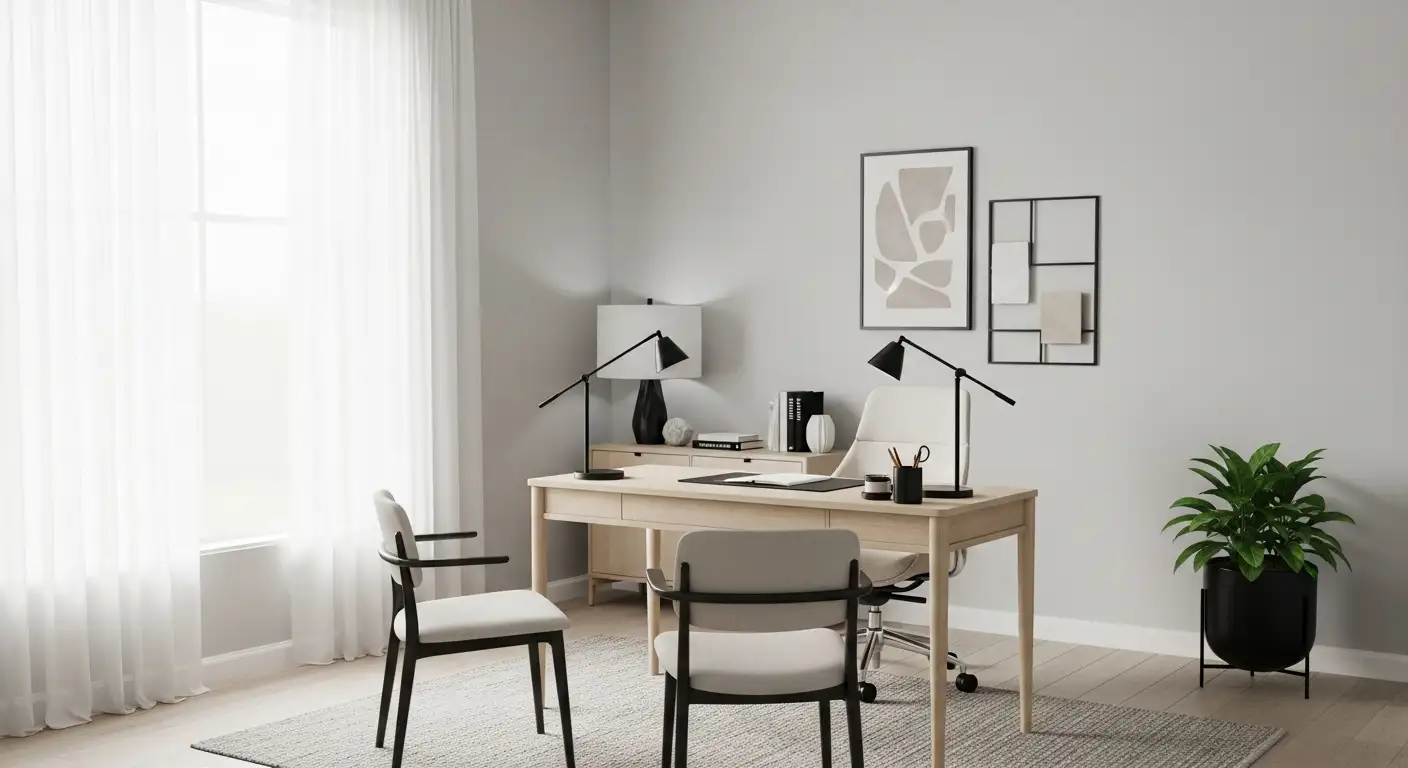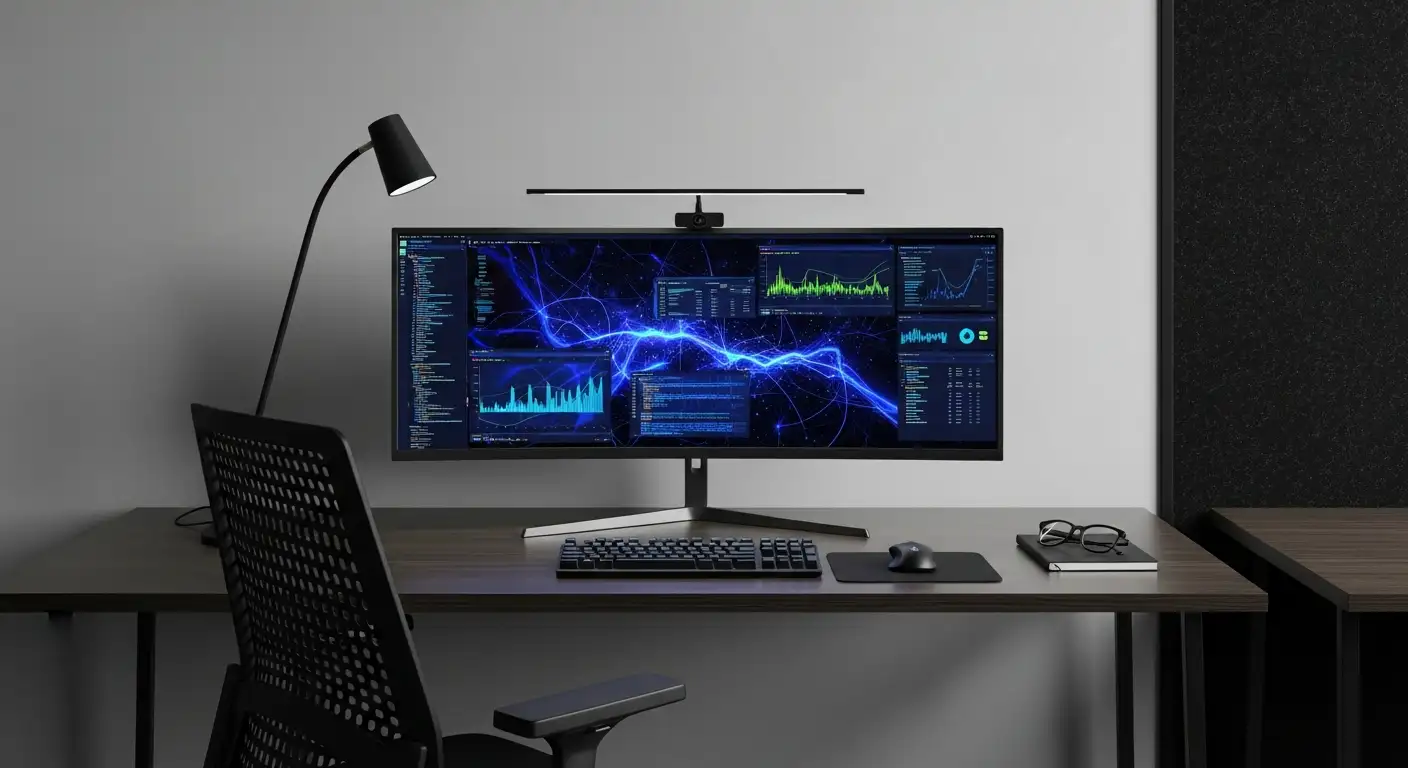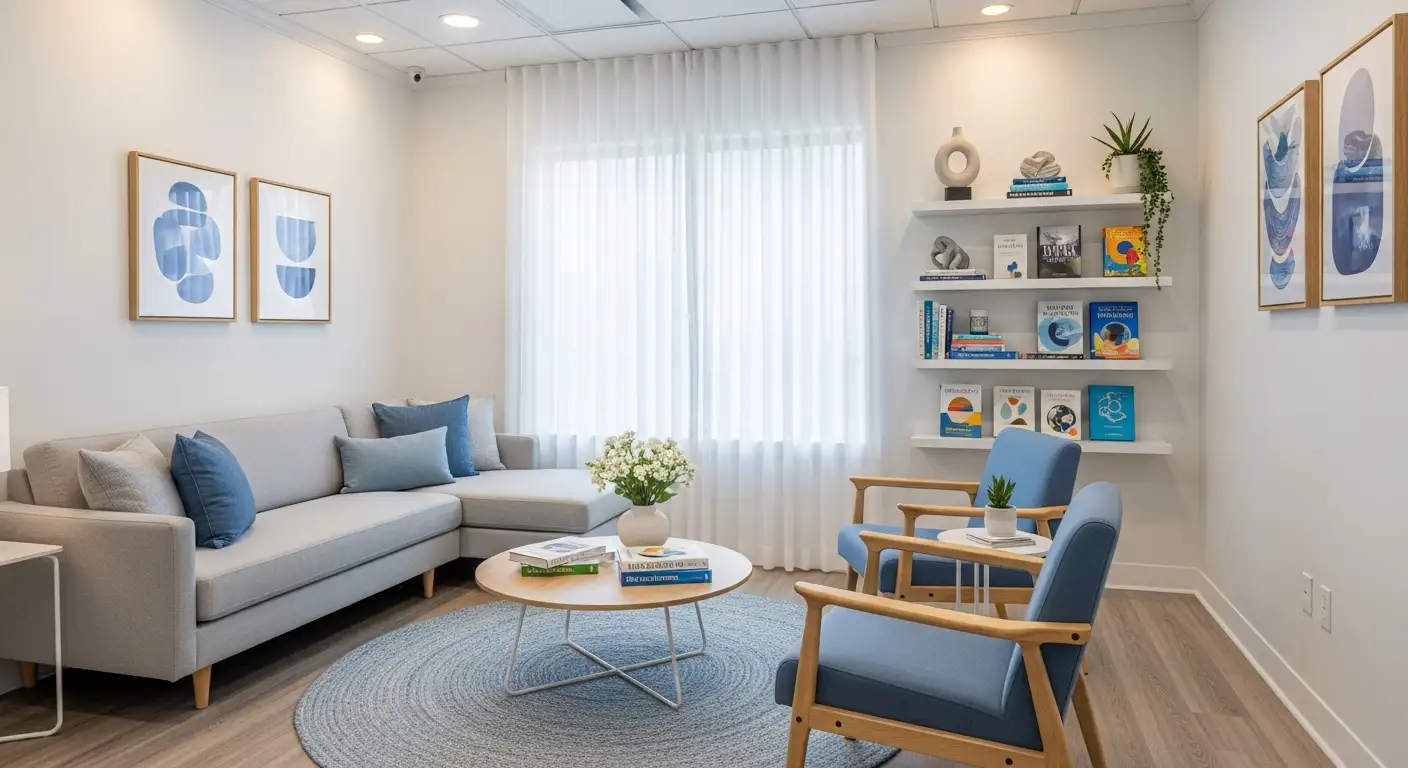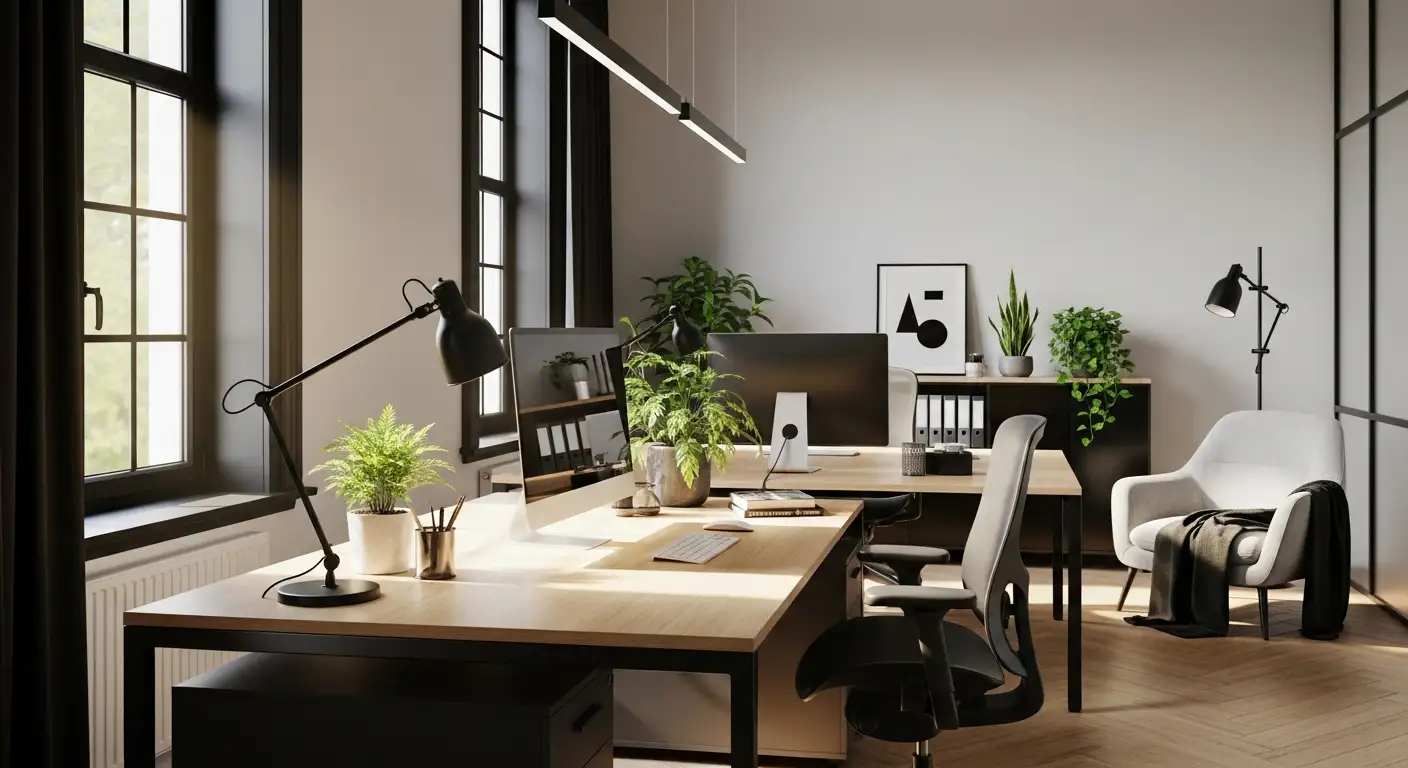Understanding Sensory Sensitivities in Autism
Autism Spectrum Disorder (ASD) is frequently accompanied by auditory sensitivities such as hyperacusis, causing increased stress and behavioral challenges. Noise-canceling headphones have emerged as practical tools to alleviate these sensory overloads, creating calmer environments both at home and in educational settings. This article explores how these devices work, their benefits, considerations for use, and how they complement therapeutic approaches like Applied Behavior Analysis (ABA) to support individuals with autism.
What Is Applied Behavior Analysis (ABA) Therapy and Its Role in Autism Support?
What is Applied Behavior Analysis (ABA) therapy and how is it used to support individuals with autism?
Applied Behavior Analysis (ABA) therapy is a well-established, evidence-based approach that aims to improve specific behaviors and skills in individuals with autism spectrum disorder (ASD). It uses scientific principles of behavior modification, primarily focusing on reinforcement strategies to encourage positive behaviors and reduce those that interfere with learning and daily functioning.
Definition and purpose of ABA therapy
ABA therapy is designed to help individuals with autism acquire crucial skills, such as communication, social interaction, self-care, and academic abilities. Through careful observation and data collection, therapists identify behaviors that need encouraging or reducing. The therapy’s goal is to support independence and improve overall quality of life.
Techniques used in ABA
ABA employs techniques like reinforcement, where desired behaviors are rewarded to increase their frequency. Teachers and therapists also use prompting — providing cues or guidance to elicit responses — which are gradually faded as the individual gains mastery. Discrete Trial Training (DTT), task analysis, and naturalistic teaching methods are commonly used to structure learning sessions and practice new skills.
Settings and methods of ABA delivery
ABA programs are tailored to each individual and delivered in a variety of settings including homes, schools, and specialized clinics. Sessions may be one-on-one or involve small groups, and can range from highly structured to more naturalistic approaches, depending on the individual’s needs and developmental level.
Outcomes and evidence supporting ABA effectiveness
Numerous research studies have shown that early, intensive ABA can lead to significant improvements in communication, social skills, and adaptive behaviors for many children with ASD. It is widely endorsed by health organizations as a foundational intervention, especially when treatment begins early in life.
While some controversies exist regarding implementation methods, contemporary ABA emphasizes child-centered, respectful strategies that support autonomy and enhance well-being.
Qualified Professionals Delivering ABA Therapy
Who provides ABA therapy and what qualifications do these professionals typically have?
Applied Behavior Analysis (ABA) therapy is delivered by a range of trained professionals including Board Certified Behavior Analysts (BCBAs), Registered Behavior Technicians (RBTs), and other specialized therapists.
BCBAs are the most credentialed individuals in this field, typically possessing a master's degree or higher in applied behavior analysis or related areas. They are responsible for conducting behavioral assessments, designing and overseeing treatment plans, and supervising therapy sessions to ensure evidence-based practices are followed.
RBTs usually hold a minimum of a high school diploma or equivalent and receive specific training in behavior analysis techniques. They work under the supervision of a BCBA, implementing therapy strategies and collecting data to track progress.
Many ABA providers also come from backgrounds in psychology, education, or related disciplines, combining academic knowledge with practical skills.
Specialized training tailored to autism spectrum disorder is vital to address the unique needs of individuals and to apply interventions effectively. Supervision by qualified BCBAs ensures treatment plans are continuously adapted and optimized based on client progress.
Collectively, these professionals form a collaborative team delivering comprehensive, individualized ABA therapy grounded in scientific principles and clinical expertise.
Primary Goals and Benefits of ABA Therapy for Individuals with Autism
What are the primary goals and benefits of ABA therapy for individuals with autism?
Applied Behavior Analysis (ABA) therapy focuses on enhancing communication, social skills, academic abilities, and daily living skills for individuals with autism. One major goal is to reduce challenging and maladaptive behaviors, helping individuals gain greater independence.
ABA uses evidence-based techniques like positive reinforcement, prompting, and functional communication training to teach practical, everyday skills. These techniques are carefully tailored to each person’s unique strengths, needs, and interests, ensuring a personalized approach.
The therapy can be provided across various settings—from home and school to community environments—making it adaptable to individual lifestyles.
Enhancing communication and social skills
ABA therapy helps improve both verbal and nonverbal communication, supporting better social interaction. This fosters stronger relationships and increases confidence.
Reducing challenging behaviors
By identifying the causes of problematic behaviors and teaching alternative responses, ABA reduces behaviors that interfere with learning and social participation.
Personalized approach and settings
Each ABA program is customized to address the specific developmental goals of the individual. Implementation in diverse settings ensures skills learned are generalized and maintained.
Long-term improvements and family support
ABA contributes to sustained progress by teaching self-regulation, emotional control, and adaptive skills. Additionally, families receive guidance and practical strategies to support their loved ones, boosting overall quality of life.
Understanding Auditory Sensitivities and Hyperacusis in Autism
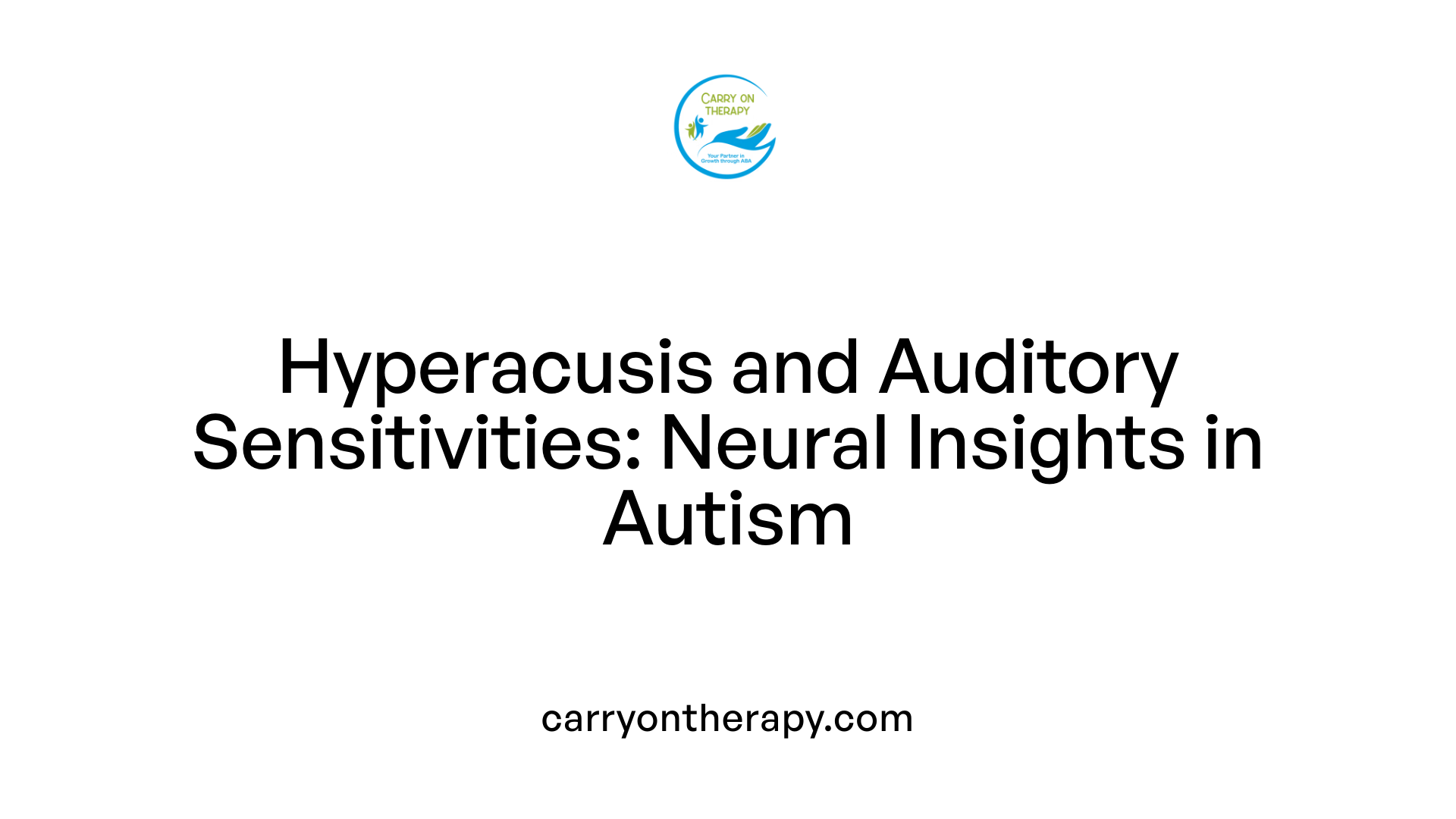
Common Auditory Sensitivities in ASD
Many children with Autism Spectrum Disorder (ASD) experience heightened sensitivities to sound, which can trigger significant distress. These auditory hypersensitivities often lead to increased sympathetic nervous system activity, manifesting as elevated stress levels and challenging behaviors.
Explanation of Hyperacusis and Its Neural Basis
A frequent form of auditory hypersensitivity in ASD is hyperacusis. This condition involves an exaggerated perception and discomfort to everyday environmental sounds that others might find normal. Neuroscientific research indicates that hyperacusis may stem from atypical neural activity early in auditory processing pathways.
Role of the Limbic System in Fear and Anxiety
The limbic system, a brain region central to emotional regulation and fear responses, appears to play an important role in hyperacusis. Its involvement can heighten feelings of anxiety and fear associated with certain sounds, intensifying sensory-related stress.
Impact of Sensory Overload on Behavior and Physiology
Difficulty in filtering and modulating sensory inputs contributes to sensory overload in individuals with ASD. This overload elevates physiological markers such as skin conductance levels and electrodermal responses, signaling increased arousal. Such physiological stress is linked to more frequent distress and problematic behaviors, underscoring the complex interaction between sensory processing and emotional wellbeing.
Physiological Impact of Sensory Overload in Children with Autism
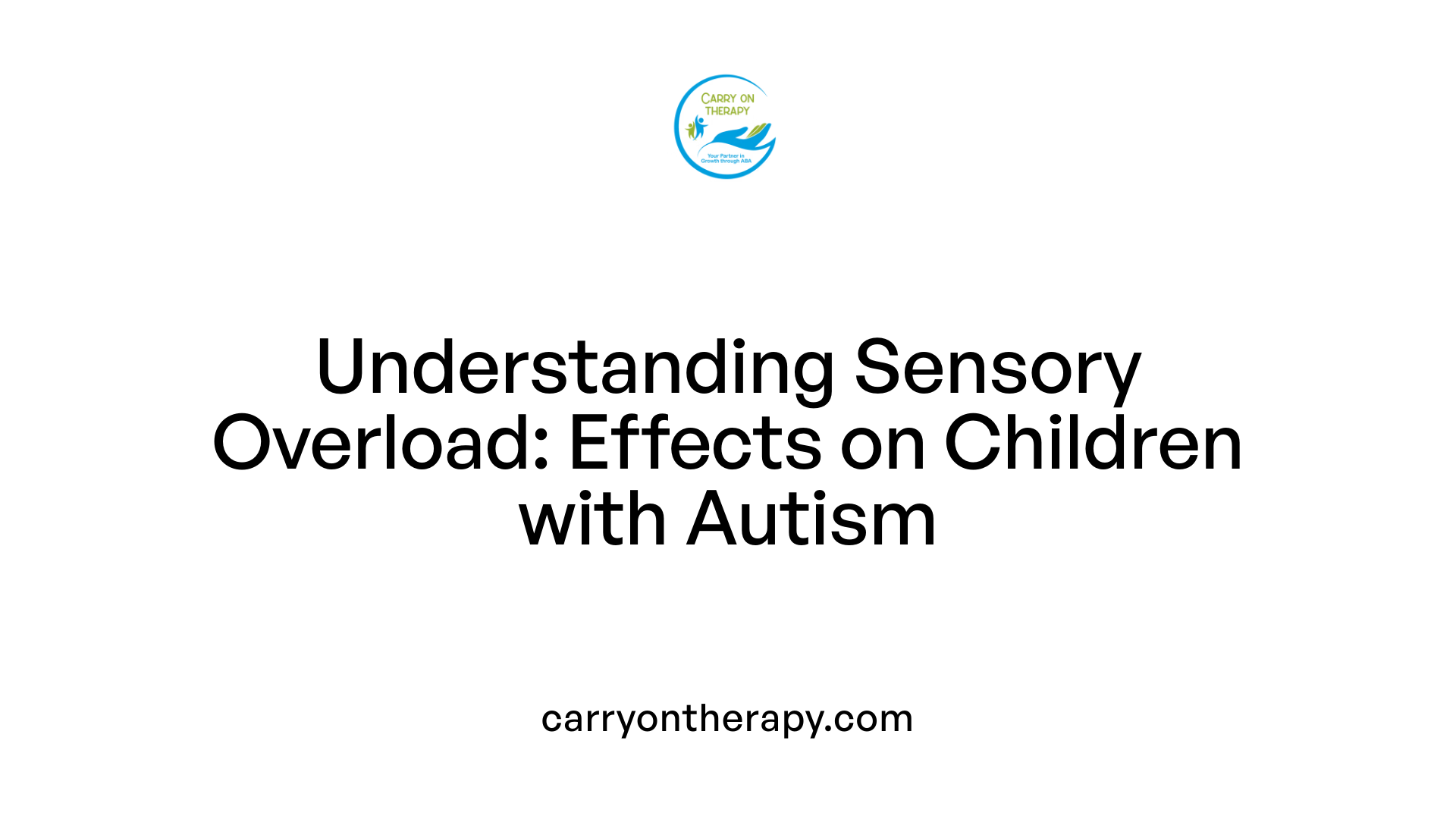
How Does Sensory Overload Affect the Sympathetic Nervous System in Children with Autism?
Many children with autism spectrum disorder (ASD) experience hypersensitivity to sound, which can trigger heightened sympathetic nervous system activity. This response manifests as increased physiological arousal, often associated with distress and challenging behaviors. The sympathetic nervous system's reaction to overwhelming sensory input, especially auditory stimuli, contributes significantly to sensory overload experiences.
What Measures Are Used to Monitor Physiological Stress from Sensory Overload?
Researchers often use skin conductance levels (SCL) and electrodermal responses (EDR) to quantify physiological stress in children with ASD. These measures track changes in sweat gland activity controlled by the sympathetic nervous system, providing real-time data on arousal levels. Wearable sensors, such as Empatica E4 wristbands, enable monitoring in natural environments to better understand sensory-related stress.
What Research Links Sensory Overload to Physiological Stress in Autism?
Studies have identified that sensory overload in children with ASD leads to increased SCL and EDR, indicating heightened physiological stress. Specifically, hyperacusis—exaggerated sensitivity to environmental sounds—is connected with atypical neural activity early in auditory processing and involves the limbic system, which regulates fear and anxiety. This link explains why auditory hypersensitivity often results in overload and physiological changes.
What Are the Behavioral and Emotional Consequences?
Physiological stress from sensory overload correlates with behavioral difficulties and emotional dysregulation in children with autism. Increased sympathetic reactivity can contribute to anxiety, distress, and problematic behaviors, such as meltdowns. Understanding this connection is crucial for developing effective interventions to improve comfort and emotional stability in these children.
How Noise-Canceling Headphones Mitigate Sensory Overload in Autism
Creating Calmer Auditory Environments
Noise-canceling headphones are valuable tools for autistic individuals, especially those experiencing hyperacusis, a heightened sensitivity to everyday sounds. These headphones use active noise cancellation (ANC) technology, which employs microphones to emit sound waves that directly oppose and reduce unwanted noise, particularly low-frequency sounds such as engines or air conditioning. Combined with passive noise isolation—achieved through physical barriers like cushioned ear cups—this technology creates a significantly quieter and calmer auditory environment.
Reduction of Auditory Stimuli Causing Distress
By diminishing environmental noise, noise-canceling headphones help reduce the overwhelming sensory input that can trigger distress and heightened sympathetic nervous system responses commonly seen in autism. Physiological studies demonstrate that children wearing noise-attenuating headphones exhibit lower electrodermal responses, indicating reduced stress levels when exposed to noisy settings. This reduction in sensory overload can help break cycles of anxiety and fear linked to atypical auditory neural activity and limbic system involvement.
Benefits Such As Meltdown Prevention and Increased Focus
The calming effect of noise-canceling headphones can prevent sensory overload-induced meltdowns, contributing to improved behavioral regulation. Users often report enhanced focus, particularly in classrooms or public spaces, where auditory distractions are prevalent. Over-ear designs provide comfort for extended use, supporting concentration during long sessions of study or travel. Additionally, volume-limiting features safeguard hearing while delivering clear, soothing sound.
Supporting Emotional Stability and Self-Regulation
Beyond reducing noise, these headphones can foster a sense of control over sensory inputs, boosting emotional stability. Customizable features such as adjustable noise cancellation levels and environmental modes allow users to tailor the experience to their surroundings, further enhancing comfort. This empowerment and decrease in sensory stress promote better self-regulation, easing everyday challenges associated with auditory hypersensitivity in autism.
Technological Principles Behind Noise-Canceling Headphones
How Does Active Noise Cancellation (ANC) Work?
Active Noise Cancellation (ANC) technology uses small built-in microphones to pick up surrounding sounds. The headphones then produce sound waves that are the exact opposite (anti-phase) of these noises. When these opposite waves meet the environmental noise, they cancel each other out, significantly reducing what the listener hears. This process is especially effective at minimizing low-frequency sounds, such as engine hums and air conditioning noise, which are common sources of auditory distractions.
What Is Passive Noise Isolation?
Passive noise isolation relies on the physical design of the headphones to block out external sounds. This is primarily achieved through materials like thick ear cushions and snug over-ear designs that cover the ears completely. By creating a physical barrier, passive isolation reduces the volume of external noises entering the ear canal without any electronic processing.
How Do ANC and Passive Isolation Differ in Strength?
While ANC excels at cancelling out consistent, low-frequency noises through sound wave manipulation, passive isolation is more effective against sudden, higher-frequency sounds that are harder to predict and counteract electronically. Combining both methods—using headphones with strong passive sealing plus effective ANC—provides the most comprehensive noise reduction.
Why Focus on Low-Frequency Noises?
Low-frequency sounds tend to be the most persistent and can contribute heavily to sensory overload, particularly for individuals with auditory sensitivities, such as autistic children with hyperacusis. Since ANC technology is especially tuned to target these sounds, it plays a crucial role in creating a calmer and more controlled auditory environment to ease discomfort and reduce stress.
Comparing Headphone Types: Over-Ear vs. In-Ear for Autism Use
Passive Isolation and Comfort Levels
Over-ear headphones provide superior passive noise isolation compared to in-ear models due to their large ear cushions that physically block out external sounds. This design helps create a calmer auditory environment for autistic individuals, making it easier to cope with sensory overload caused by hyperacusis.
Suitability for Sensitive Individuals and Long-Term Wear
For children and adults with autism, over-ear headphones are generally more comfortable for extended use, especially during long classroom sessions or travel. Their cushioned design reduces pressure on the ear canal, unlike in-ear models, which can cause irritation or discomfort in sensitive users.
Potential Discomfort with In-Ear Models
While in-ear headphones are more portable, they may not be ideal for many autistic individuals due to potential discomfort and lack of effective passive noise isolation. Their smaller size and insertion into the ear canal can sometimes exacerbate sensory sensitivities, limiting their practical use over long periods.
Use Cases in Classrooms and During Travel
Over-ear headphones are well-suited for environments such as classrooms and public transport, where controlling background noise can reduce anxiety and improve focus. Their ability to combine active noise cancellation (ANC) with physical isolation supports sensory management in diverse settings.
| Headphone Type | Noise Isolation | Comfort Level | Ideal Use Cases |
|---|---|---|---|
| Over-Ear | High (Passive + ANC) | High for long-term wear | Classrooms, travel, daily use |
| In-Ear | Moderate (ANC only) | May cause discomfort in sensitive users | Short-term listening, portability needed |
Key Features to Consider When Selecting Headphones for Autism
Microphone Array and Signal Processing Power
Active noise-canceling (ANC) headphones rely on built-in microphones to capture ambient sounds and generate opposing sound waves, effectively reducing low-frequency noise like engines and air conditioning. High-quality microphone arrays paired with powerful signal processing enhance ANC performance, ensuring that sound reduction is smooth and adaptive to changing environments.
Battery Life Importance
Since many autistic users benefit from wearing noise-canceling headphones for extended periods—such as during classroom sessions or travel—a long-lasting battery is crucial. Models from brands like Bose and Sony offer extended battery life, supporting daily use without frequent recharging.
Wireless vs Wired Connectivity Advantages
Wireless headphones add convenience and portability, minimizing tangled cables and allowing free movement, which can be beneficial for children and adults alike. However, wired models avoid issues of battery depletion and may provide slightly better sound quality. The choice depends on personal preferences and use cases.
Portability and Durability
Headphones suitable for users with autism should be sturdy enough to withstand frequent handling and transport. Features like robust construction, protective carrying cases, and easy maintenance (such as cleaning cushions) contribute to durability. Portability allows seamless integration into various environments, from classrooms to public places.
Volume Limiting for Hearing Protection
Especially for children with auditory sensitivities, limiting volume to 85 dB prevents accidental overexposure, safeguarding hearing health. Some brands, such as Puro Sound Labs, provide built-in volume-limiting functions that ensure safe listening levels, combining protection with effective noise reduction.
By focusing on these features, caregivers and users can select headphones that not only reduce sensory overload but also enhance comfort, safety, and usability.
Top Headphone Brands Offering Effective Solutions for Autism-Related Sensory Needs
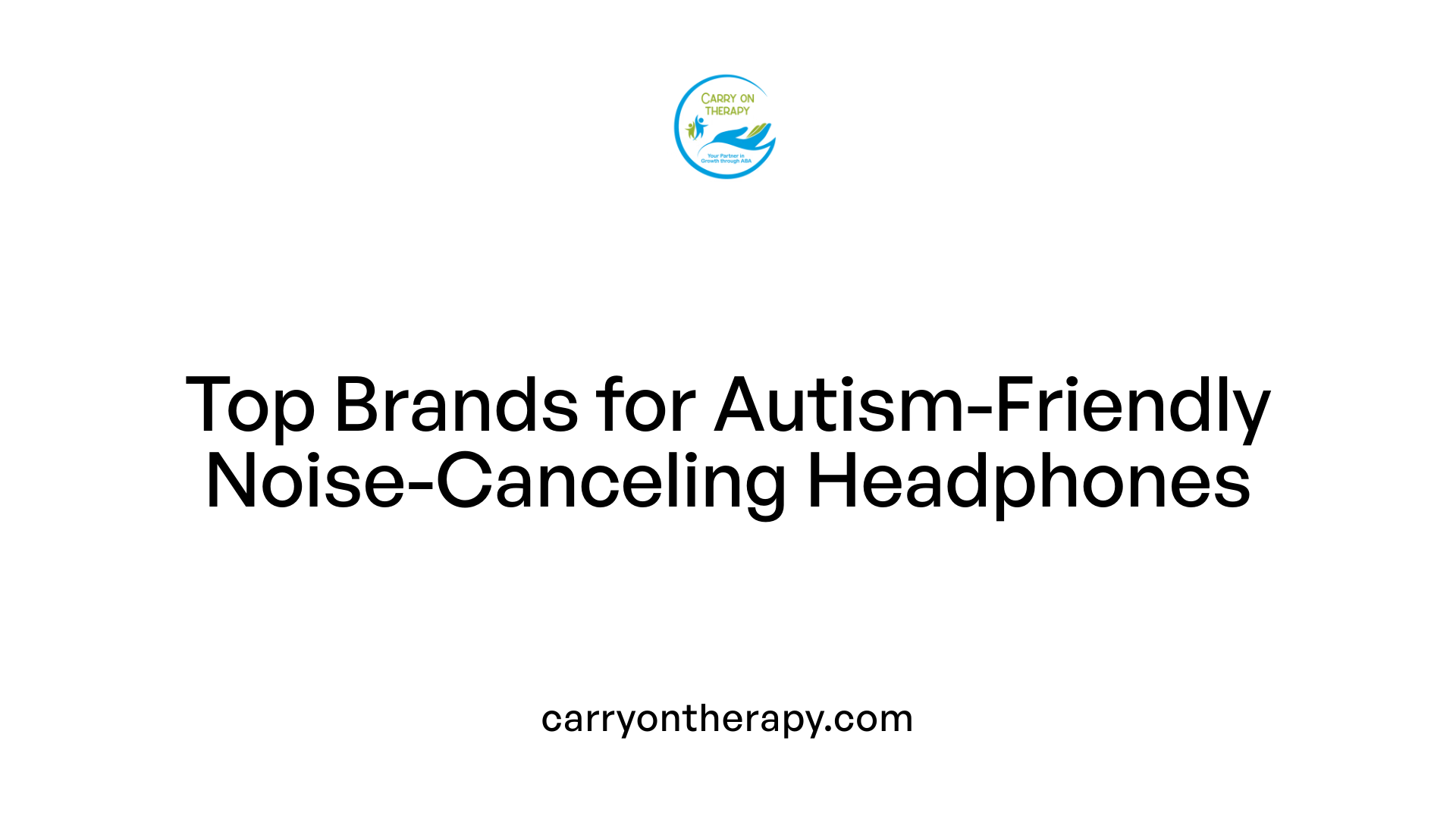
What features do Bose QuietComfort 45 and Sony WH-1000XM5 offer?
Bose QuietComfort 45 and Sony WH-1000XM5 headphones stand out with their adaptive active noise cancellation (ANC) technology, which dynamically adjusts to varying noise environments. This makes them particularly effective for autistic individuals experiencing sensory overload due to unpredictable sounds.
How do adaptive ANC and extended battery life contribute?
Adaptive ANC in these models targets low-frequency noises such as engines and HVAC systems, creating a calmer auditory environment. They also boast extended battery lives, supporting all-day use whether in classrooms, travel, or at home. For instance, the Sony WH-1000XM5 can last up to 30 hours, while Bose QuietComfort 45 offers around 24 hours of continuous use.
What is their reputation for reliability and comfort?
Both Bose and Sony are reputable brands known for durable design and high comfort levels. Over-ear designs provide superior passive noise isolation, essential for long sessions without discomfort. Their ergonomic builds help autistic children and adults wear the headphones for extended periods without irritation.
What do user reviews say about their performance?
User feedback highlights consistent performance in reducing sensory overload and improving focus. Many note the headphones' ability to prevent meltdowns and facilitate emotional stability. Positive reviews also emphasize the importance of volume-limiting features and sound quality, especially when used by children with hyperacusis.
These two brands remain top choices for those seeking effective, reliable noise-canceling headphones tailored to sensory needs associated with autism.
Safety and Hearing Protection: Volume Limits for Children's Headphones
Why Limit Volume to 85 dB for Children's Headphones?
Listening at high volumes can damage hearing, and children with autism spectrum disorder (ASD) are particularly vulnerable due to their possible increased use of headphones to manage sensory overload. Limiting volume to 85 decibels (dB) is a widely accepted safety threshold to prevent hearing loss caused by prolonged exposure to loud sounds. Maintaining this limit helps protect auditory health and reduces the risk of additional stress caused by loud, uncomfortable noise levels.
Volume-Limiting Technologies in Headphones
Many headphones designed for children incorporate volume-limiting features that cap the maximum output level to safe thresholds. These technologies ensure that even accidental increases in volume do not exceed 85 dB. Volume-limiting functions typically involve hardware or software that restricts the sound output, providing parents and caregivers peace of mind that auditory safety is prioritized.
Brands Specializing in Hearing-Safe Headphones
Certain brands focus on producing headphones tailored for children's hearing needs, combining volume limits with comfort and durability. For example, Puro Sound Labs offers models with built-in volume limits and sound quality optimized for gentle, clear audio. Such brands acknowledge the importance of creating equipment suitable for children with ASD, addressing sensory sensitivities while safeguarding hearing.
Protecting Auditory Health in Children with ASD
Children with ASD often experience hypersensitivities to sound that can lead to distress and problematic behaviors. Using volume-limited headphones that prevent overexposure helps reduce the risk of exacerbating these sensitivities. Safe listening practices combined with gradual headphone introduction and ongoing monitoring create a supportive environment, ensuring children enjoy the benefits of noise attenuation without compromising their hearing health.
Practical Integration of Headphones in Various Environments
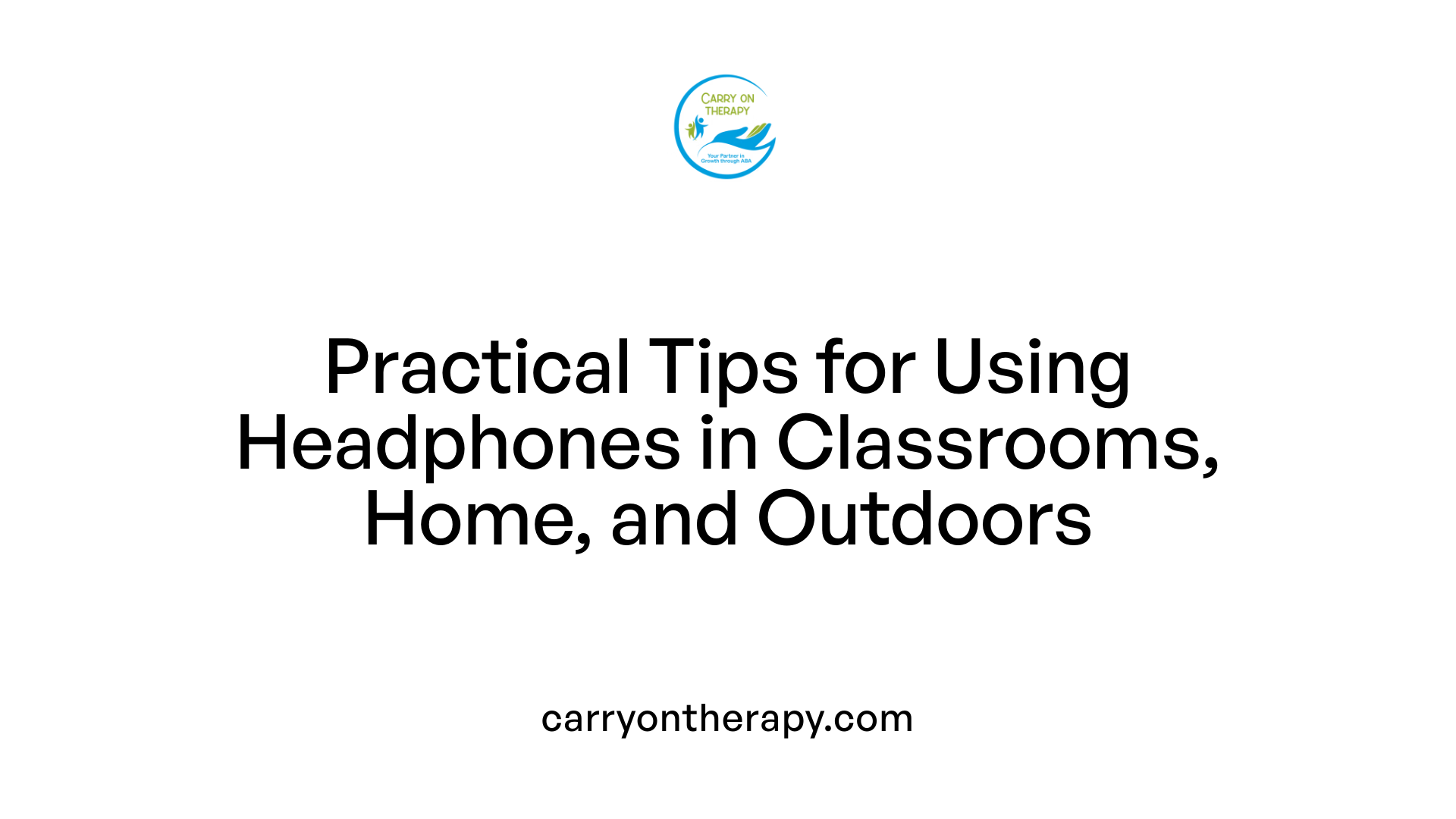
How Can Noise-Canceling Headphones Be Used in Classrooms, Public Spaces, and Homes?
Noise-canceling headphones serve as effective tools to reduce sensory overload for autistic individuals across multiple environments. In classrooms, they can help minimize distractions from background noise, aiding focus and reducing stress during lessons. Public spaces, such as shopping centers or transport hubs, often have unpredictable and loud sounds; headphones provide a calming buffer against these triggers. At home, headphones create a refuge where sensory input is controlled, supporting relaxation and emotional regulation.
What Are Important Considerations for Proper Fit and Safety?
Ensuring a proper fit is critical to maximize comfort and effectiveness. Over-ear models typically offer superior passive noise isolation and comfort, especially for extended use. For children, headphones should include volume-limiting features set at or below 85 dB to protect their hearing from accidental overexposure. Adjustable headbands and cushioned ear pads improve wearability, while durable construction helps with long-term use. Regular cleaning and storage in protective cases prolong headphone life and hygiene.
How Do Noise-Canceling Headphones Help Create Supportive Sensory Environments?
By reducing auditory input through active and passive noise cancellation, headphones help create calmer, more manageable sensory surroundings. This reduction in sensory overload may prevent meltdowns and decrease sympathetic nervous system reactivity linked to hyperacusis. Adjustable noise cancellation levels and environmental modes allow users to customize the balance between quietness and awareness of important ambient sounds, supporting comfort and safety.
Why Is Collaboration With Educators and Caregivers Important?
Engaging educators and caregivers in setting up headphone use ensures consistent support and helps establish routines that maximize benefits. Gradual introduction tailored to individual needs enhances acceptance and effectiveness. Monitoring comfort and physiological responses, such as stress indicators, allows for ongoing adjustments. Open communication facilitates addressing challenges and integrating headphones as a helpful sensory tool within learning and home environments.
Strategies for Introducing Headphones Gradually to Children with Autism
Personalization and Fitting
It's essential to tailor headphone choice and fit to each child's unique sensory needs. Over-ear headphones are often preferable for their comfort and superior noise isolation during longer use. Ensuring headphones fit well without causing pressure or discomfort helps encourage consistent use. Volume-limiting features protect delicate hearing, especially important for children with hyperacusis.
Monitoring Comfort and Effectiveness
Parents and caregivers should observe how children respond physiologically and behaviorally when wearing headphones. Using wearable sensors can help track stress indicators like electrodermal activity, providing objective data on headphone benefits. Regular check-ins will help identify if adjustments or breaks are needed.
Gradual Acclimation to Reduce Resistance
Introducing headphones bit by bit — starting with short sessions in quiet environments — allows children time to adjust. Slowly increasing wear time and exposure to different noise settings helps reduce anxiety or resistance. Pairing headphone use with favorite activities can make the experience more positive.
Involving Families and Therapists
Collaboration with families and autism specialists ensures consistent approaches across settings. Therapists can offer strategies to support headphone acceptance and adapt use during various activities such as classroom learning or travel. Educating families about the benefits and proper use increases successful integration into daily routines.
Scientific Evidence Supporting Headphone Use in Reducing Sensory Stress
Studies Measuring Electrodermal Activity Reduction
Research has demonstrated that noise-attenuating headphones significantly reduce physiological stress indicators in children with autism spectrum disorder (ASD). Electrodermal activity (EDA), a measure of sympathetic nervous system arousal, decreases when children use these headphones in natural settings. This reduction signifies lowered sensory stress and improved comfort.
Use of Wearable Sensors for Real-Time Monitoring
Wearable devices like Empatica E4 wristbands enable continuous, real-time monitoring of electrodermal responses. These sensors provide valuable data on how auditory environments impact children with ASD, allowing caregivers and clinicians to assess the effectiveness of noise-attenuating interventions dynamically. Using such technology facilitates personalized headphone use to maximize stress reduction.
Noise-Attenuating Headphones Impact on Physiological Stress
Noise-attenuating headphones, encompassing both active noise cancellation and passive isolation, serve as a buffer against overwhelming environmental sounds. By attenuating auditory stimuli, these headphones help individuals with hyperacusis, a common auditory hypersensitivity linked to ASD, to maintain lower stress levels. Studies show that children equipped with these devices exhibit diminished skin conductance levels and electrodermal responses, underscoring decreased physiological stress.
Correlation with Decreased Sympathetic Nervous System Arousal
The use of noise-canceling headphones correlates strongly with reduced sympathetic nervous system reactivity in autistic individuals. Since hyperacusis engages atypical neural activities and triggers fear or anxiety through limbic system involvement, attenuating sensory input helps regulate emotional responses. Consequently, headphones facilitate calmer states and mitigate anxiety-related behaviors by moderating sympathetic activation.
| Aspect | Observation | Significance |
|---|---|---|
| Electrodermal Activity (EDA) | Reduced with headphone use | Indicates lowered sensory stress |
| Wearable Sensor Technology | Enables real-time physiological monitoring | Supports personalized and adaptive interventions |
| Noise-Attenuating Headphones | Buffer environmental noise impact | Helps manage hyperacusis-related distress |
| Sympathetic Nervous System | Decreased arousal correlated with headphone use | Promotes emotional stability and reduces anxiety-driven behaviors |
Role of Wearable Technology in Assessing Sensory Responses in Autism
Empatica E4 Wristbands and Electrodermal Response Monitoring
Wearable sensors like the Empatica E4 wristband have become valuable tools for monitoring electrodermal responses (EDR) in children with autism spectrum disorder (ASD). These devices measure skin conductance levels (SCL), providing real-time data on autonomic nervous system activity linked to sensory sensitivities, including reactions to auditory stimuli such as environmental noise.
Feasibility of Real-Time Physiological Data Collection
Studies have shown that collecting physiological data in natural settings using wearable sensors is both feasible and informative. Continuous monitoring allows caregivers and researchers to capture moment-to-moment variations in stress and sensory overload, which traditional observation methods might miss. This real-time approach helps identify triggers and assess the effectiveness of interventions like noise-attenuating headphones.
Links Between Sensory Sensitivities and Physiological Measures
Children with ASD often experience hyperacusis, characterized by exaggerated responses to everyday sounds. Wearable sensors reveal these heightened sensitivities through elevated electrodermal activity, indicating increased sympathetic nervous system activation. Using noise-attenuating headphones has been shown to reduce these physiological stress markers, validating the headphones’ role in easing sensory overload.
Future Research Directions
Future studies may explore integrating AI-driven analytics with wearable sensors to better predict sensory stress events and personalize interventions. Additionally, combining physiological data with behavioral observations could enhance understanding of how sensory processing disorders develop and respond to various supports. Such advancements could lead to more adaptive and responsive tools for improving quality of life for individuals with ASD.
Benefits of Adjustable Noise Cancellation and Environmental Modes
Customization for Different Ambient Noise Levels
Adjustable noise cancellation allows users to tailor the level of sound reduction based on their surrounding environment. This feature is especially valuable for autistic individuals who experience hyperacusis and sensory overload, as they encounter varying noise intensities throughout the day. For example, in a noisy classroom or on a busy street, higher levels of noise cancellation can provide relief by minimizing overwhelming sounds. Conversely, in quieter settings, reducing active noise cancellation prevents complete sensory isolation, maintaining necessary awareness.
Reducing Stress in Variable Environments
Environmental modes enable headphones to selectively filter or allow specific external sounds, such as announcements or conversations, creating a balance between noise cancellation and situational awareness. This reduces anxiety and stress by helping users stay connected to their context while blocking irritating or distressing background noise. Such balance supports emotional stability and prevents the physiological effects of sensory overload, including elevated sympathetic nervous system reactivity.
Enhancing Comfort During Headphone Use
Adjustable noise canceling settings contribute to overall comfort, preventing fatigue that might result from constant, intense noise suppression. Over-ear headphones with these adaptable features support longer wear during school, travel, or home use, reducing sensory discomfort. Being able to personalize the auditory environment promotes relaxation and a sense of control—both crucial for managing hyperacusis and associated behaviors in children with autism.
Technological Flexibility for User Needs
Modern headphones from brands like Bose and Sony integrate advanced adaptive ANC and environmental modes powered by sophisticated microphone arrays and processing systems. These technologies automatically adjust noise cancellation levels based on ambient conditions, further simplifying use. This flexibility makes them suitable for a variety of settings and user preferences, increasing the likelihood of consistent headphone use and maximizing benefits.
| Benefit | Description | User Advantage |
|---|---|---|
| Adjustable Noise Cancellation | Tailors noise reduction to ambient sound levels | Customized sensory relief |
| Environmental Modes | Filters select external sounds while canceling unwanted noise | Balance between awareness and quiet |
| Comfort Enhancement | Reduces fatigue via adaptable noise suppression | Longer wear time without discomfort |
| Technological Flexibility | Adaptive, automatic adjustment with advanced processing | Easier use, consistent protection |
Enhancing Headphone Durability and Maintenance for Long-Term Use
Importance of Cleaning and Storing
Regular cleaning is essential to maintain headphone hygiene and functionality, especially for autistic individuals who may use them extensively. Dust, sweat, and oil can accumulate on ear cushions and speaker grills, potentially affecting sound quality and comfort. Cleaning with gentle, non-abrasive materials helps extend the lifespan of the headphones and prevents skin irritation.
Protective Cases and Accessory Care
Using a protective case when headphones are not in use shields them from accidental damage, dust, and moisture. Cases designed specifically for over-ear headphones ensure a snug fit and reduce wear on delicate components such as the headband and ear cushions. Proper storage also helps avoid tangling and breaking of cables in wired models, maintaining connection quality.
Ensuring Sustained Performance and Comfort
Headphones may lose comfort and effectiveness over time due to wear on padding and mechanical parts. Replacing ear cushions periodically can restore softness and noise isolation, preserving the calming benefits for users managing sensory overload.
Recommendations for Maintenance Routines
A simple routine including wiping down surfaces after use, storing headphones in a suitable case, and inspecting cables and ear cushions monthly can keep headphones performing well. Special attention should be given to maintaining safety features such as volume-limiters, ensuring they continue to protect hearing. Following manufacturer instructions regarding cleaning agents and replacement parts is also advised for sustained headphone integrity.
Advantages of Over-Ear Headphones for Extended Daily Use
Superior passive noise isolation
Over-ear headphones excel in providing passive noise isolation through their large ear cushions that physically block out ambient sounds. This makes them highly effective at reducing environmental noise, particularly in noisy classrooms and busy travel settings. By minimizing auditory distractions, they help create a calmer auditory environment for individuals with sensory sensitivities.
Comfort for long sessions
The design of over-ear headphones offers a spacious fit around the ears, which distributes pressure evenly and enhances comfort during prolonged use. Unlike in-ear models that may cause irritation or discomfort, over-ear headphones support sustained wear, crucial for children or adults with autism who may need continuous noise reduction throughout the day.
Suitability for educational and travel contexts
Over-ear headphones are especially suitable for environments such as classrooms and travel where sensory overload can trigger distress. Their effective noise attenuation helps reduce hyperacusis symptoms by lowering exposure to overwhelming sounds like chatter, engines, or ventilation systems. This protective feature contributes to better focus, reduced anxiety, and improved emotional regulation in these settings.
Reducing discomfort related to hypersensitivity
Many autistic individuals experience heightened sound sensitivity, which can lead to discomfort or agitation. The cushioned design reduces tactile irritation, and with adjustable noise cancellation features, users can tailor the sensory input to levels that feel manageable. This personalized control supports relaxation and helps prevent meltdowns due to sensory overload.
In summary, over-ear headphones combine superior sound isolation, comfort, and adaptability, making them an ideal choice for extended daily use by autistic individuals managing auditory hypersensitivities.
Smart Features Emerging in Headphones for Sensory Needs
How is AI-driven adaptive noise cancellation enhancing headphones for sensory needs?
AI-driven adaptive noise cancellation represents a significant advancement in headphones designed to support individuals with sensory sensitivities such as autism. This technology employs artificial intelligence algorithms to continuously analyze ambient sounds and adapt the noise cancellation levels in real time. Unlike traditional ANC that targets mostly predictable, low-frequency noises, AI adaptive ANC can respond dynamically to a broader range of environmental sounds—from sudden loud noises to constant background hums—providing more precise relief from sensory overload. This continuous adjustment helps maintain a calmer auditory environment, which is invaluable for those experiencing hyperacusis or auditory hypersensitivity.
What are the trends in eco-friendly manufacturing for these headphones?
The headphone industry is increasingly embracing eco-friendly manufacturing to reduce environmental impact. This trend includes using sustainable materials such as recycled plastics, biodegradable components, and packaging made from recycled or minimal materials. Brands committed to eco-conscious production also focus on energy-efficient assembly processes and reducing harmful emissions. For users with sensory needs, eco-friendly headphones offer the benefit of sustainability without compromising on comfort or performance, aligning with a growing demand for responsible consumer electronics.
How do smart sensors automatically adjust headphone settings?
Smart sensors embedded in modern headphones detect external noise levels and user activity to automatically adjust settings like noise cancellation intensity and volume. For example, sensors may reduce ANC levels in quiet environments to conserve battery life or increase sound blocking when entering noisy spaces. Additionally, some models can switch between environmental modes, allowing awareness of important sounds such as announcements while still providing auditory protection. This automation simplifies use for individuals with autism, who might find manual adjustments challenging, thereby enhancing usability and stress reduction.
What is the potential impact on user experience with these smart features?
The integration of AI adaptive ANC, eco-friendly materials, and intelligent sensors creates a more personalized and efficient listening experience. Users benefit from headphones that intuitively respond to their environment and individual sensory needs, reducing overload and supporting emotional stability. Furthermore, increased battery efficiency and sustainable design add to the appeal and reliability of devices for daily use in school, travel, and home settings. Collectively, these innovations promise to make sensory-supportive headphones more effective, comfortable, and accessible for autistic individuals seeking control over their auditory surroundings.
Addressing Behavioral Concerns Through Combined Use of ABA and Headphones
How Can Noise-Canceling Headphones Help Reduce Meltdowns and Distress?
Sensory overload often triggers meltdowns in children with autism due to their heightened auditory sensitivities, including hyperacusis. Noise-canceling headphones create a calmer environment by reducing overwhelming sounds through active noise cancellation (ANC) and passive isolation. This reduction in environmental noise lowers sympathetic nervous system reactivity, decreasing physiological stress markers such as electrodermal responses. Consequently, children experience less distress and fewer meltdowns.
In What Ways Do Headphones Support Focus and Communication Skills?
By controlling auditory input, noise-canceling headphones limit distracting background noises, helping children with autism maintain attention during tasks such as classroom learning or therapy sessions. Improved focus facilitates better absorption of information and enhances communication efforts. Additionally, headphones with adjustable noise cancellation levels allow personalization according to the setting, further optimizing concentration.
How Do Headphones Provide a Sense of Control and Safety?
For children with ASD, unpredictable sensory stimuli can lead to anxiety. Wearing noise-canceling headphones offers a tangible way to manage their sensory world, fostering a sense of control. Features like volume limiting protect hearing, ensuring safety during prolonged use. Over-ear designs provide comfort for long sessions and further enhance the feeling of security.
How Do Headphones Complement Applied Behavior Analysis (ABA) Therapy?
Integrating noise-canceling headphones into ABA therapy can bolster intervention effectiveness by creating a less stressful sensory environment. When combined with ABA, headphones can reduce disruptive behaviors tied to sensory overload, thereby helping children engage more fully in therapy. Gradual introduction and ongoing monitoring ensure the technology supports therapeutic goals without causing discomfort.
Table: Summary of Behavioral Benefits of Noise-Canceling Headphones in Autism Support
| Benefit | Function/Mechanism | Impact on Behavior and Therapy |
|---|---|---|
| Meltdown Reduction | Lowers auditory stimulation and stress markers | Fewer distress episodes and improved emotional stability |
| Enhanced Focus | Diminishes distracting noises with ANC and isolation | Better task engagement and communication |
| Sense of Control and Safety | Adjustable noise levels and hearing protection | Increased autonomy and comfort |
| Complement to ABA Therapy | Sensory regulation supports behavior modification | Improved therapy participation and outcomes |
User Experiences and Testimonials: Real-World Benefits of Headphones

Parental and educator observations
Parents and educators frequently report that noise-canceling headphones significantly improve the daily experiences of autistic children, particularly those struggling with hyperacusis. Many note a noticeable decrease in sensory overload incidents, which often translates to fewer meltdowns and improved emotional stability. Teachers have observed better focus and participation in classroom activities when students use such headphones.
Improvements in calmness and attention
Users often describe a newfound sense of calm when wearing noise-attenuating headphones, as they help buffer overwhelming background noises. This creates an environment conducive to relaxation and sustained attention, which is crucial for learning and social interaction. Children typically exhibit less anxiety and demonstrate greater engagement.
Challenges and solutions in use
Despite their benefits, some challenges arise, such as initial resistance to wearing headphones or discomfort during extended use. Caregivers and professionals emphasize the importance of gradual introduction, personalization to fit individual sensory preferences, and ongoing monitoring to ensure comfort. Selecting ergonomic over-ear designs often mitigates discomfort. Additionally, volume-limiting features and adjustable noise cancellation settings help balance effectiveness with safety.
Variable responses and personalization importance
It's important to recognize that responses to noise-canceling headphones vary across individuals with autism. While many benefit from adaptive ANC technology and high-quality passive isolation, others may prefer simpler models. Customization options and trial periods play a vital role in finding an optimal fit. User testimonials consistently highlight that personalization improves both acceptance and functional outcomes, making headphones a flexible tool in managing sensory sensitivities.
Ethical Considerations and Personalization in Sensory Equipment Use
Respecting Individual Sensory Preferences
Every autistic individual experiences sensory input uniquely, highlighting the importance of honoring personal preferences. Noise-canceling headphones should be introduced respectfully, recognizing that some may find certain types or levels of noise reduction uncomfortable or even distressing. Personalization is crucial to ensure the equipment genuinely supports comfort rather than imposing unwanted sensory experiences.
Avoiding Over-Reliance on Headphones
While noise-attenuating headphones can significantly ease sensory overload and hyperacusis, caution is needed to prevent over-dependence. They should be a part of a balanced approach that includes other coping strategies and environmental accommodations. Encouraging gradual and moderated use helps maintain natural sensory engagement and prevents possible dependency.
Ensuring Dignity and Autonomy
Supporting dignity means equipping individuals with choice and control over their sensory tools. Users should decide when and how to use headphones, reflecting autonomy and respect. Avoid framing headphone use as a necessity imposed by caregivers or educators; instead, position it as a welcomed aid enhancing wellbeing.
Involving Individuals in Choice and Adaptation
Engaging individuals in selecting headphone types, features, and fit fosters empowerment and comfort. Ongoing monitoring and adjustment ensure the device continues to meet evolving needs. This collaborative approach reinforces trust, improves effectiveness, and helps tailor usage to personal sensory profiles.
By weaving ethical mindfulness with personalized application, headphones can enrich sensory management for autistic individuals, creating calm environments that preserve respect, independence, and comfort.
Summary: Enhancing Quality of Life with Headphones for Autism
How Do Noise-Canceling Headphones Reduce Sensory Overload and Anxiety?
Noise-canceling headphones are effective tools for autistic individuals experiencing hyperacusis, a condition marked by heightened sensitivity to sounds. By combining active noise cancellation (ANC), which counteracts low-frequency noise using microphones and opposing sound waves, with passive noise isolation from materials like cushioned ear cups, these headphones create a calmer auditory environment. This reduction in overwhelming noise helps lower sympathetic nervous system reactivity, which is associated with distress and challenging behaviors in children with autism.
In What Ways Do Headphones Support Emotional Regulation?
By diminishing auditory overload, these devices contribute to improved focus and relaxation. Many users benefit from the sense of control and calm that headphone use fosters. Physiological studies show decreased electrodermal activity — indicators of stress — when noise-attenuating headphones are worn in natural settings. This can prevent meltdowns and stabilize emotional responses, helping autistic individuals navigate busy environments such as classrooms or public spaces more comfortably.
What Practical Factors Should Be Considered When Choosing and Using Headphones?
Choosing headphones involves assessing several features to maximize comfort and effectiveness:
- Type: Over-ear headphones provide superior passive isolation and are more comfortable for long-term wear, especially important for children and those with sensitivity.
- Volume Safety: Devices with volume-limiting features that cap levels at 85 dB, like those from Puro Sound Labs, protect fragile hearing.
- Battery Life & Connectivity: Longer-lasting ANC and wireless options enhance daily usability.
- Customization: Adjustable noise cancellation levels and environmental modes allow adaptation to different surroundings.
- Durability & Maintenance: Proper cleaning and protective storage prolong device lifespan.
How Can Headphones Complement Therapeutic and Educational Approaches?
Integrating headphone use into classrooms and homes, with careful fit and safety precautions, supports sensory management as part of a broader strategy. Gradual introduction and personalization tailored to each child's sensitivities improve acceptance and effectiveness. Continuous monitoring of comfort and stress indicators, potentially with wearable sensors that track electrodermal responses, can guide adjustments. Combined with therapies focusing on sensory processing and emotional regulation, noise-canceling headphones provide a valuable aid for enhancing quality of life in autism.
Creating Calmer Spaces: The Role of Headphones in Autism Support
Noise-canceling headphones represent a valuable tool in managing sensory overload and enhancing the daily experiences of individuals with autism. By combining advanced technology, thoughtful design, and informed usage strategies, these devices contribute to reducing anxiety, improving focus, and supporting emotional regulation. When integrated thoughtfully alongside therapies such as ABA and tailored to individual needs, headphones help create calmer, more manageable environments. Continued innovation and research promise even greater customization and effectiveness, empowering autistic individuals and their families toward improved quality of life.
References
- Best Noise-Canceling Headphones for Autism | Inclusive ABA
- Effectiveness of Noise-Attenuating Headphones on ...
- Noise Canceling Headphones for Autistic Individuals
- Applied Behavior Analysis (ABA)
- Applied Behavior Analysis (ABA)
- 6 Benefits of ABA Therapy for Children with Autism
- How to Become an ABA Therapist - School of Education
- How to Become an Applied Behavior Analyst (ABA) Therapist
- Board Certified Behavior Analysts (BCBA)
You have to Start to be Great!


